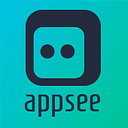Tablets vs. Smartphones in 2018: What are the key differences in UX and user behavior?
Even though both tablets and smartphones have a similar form factor and an almost identical touch-oriented interface, these two types of devices are worlds apart in terms of UX and user behavior. Tablets might seem like an enlarged version of the smartphone, but they are in fact devices with their own unique audience. The activities they’re primarily used for are notably different. The places they’re used at, and the things people are using them for, are also distinctive, compared to smartphone users.
Accordingly, the experience users have when operating a tablet and a smartphone are unique, which is why mobile product managers should never consider one as an extension of the other, but rather as two completely independent ecosystems.
Here are the four key differences that shape user experience and behavior on a smartphone, versus on a tablet. By keeping these in mind, you can better tailor your mobile app product to your target audience, and draw and retain a larger number of users.
Mobile vs home device
Despite both being portable, at the end of the day it’s just the smartphone that’s considered ‘mobile’. A tablet is mostly seen as a ‘home’ device, one that’s used in a fixed position, either home, office or similar. Smartphones are used far more frequently but for shorter periods of time. There’s an extremely important takeaway from this statistic. ‘Mobile’ means people mostly use it on the go — resulting in shorter, but more frequent session lengths.
The average session length on mobile is half the session length on tablet devices. Operating from the comfort of their home, or office, tablet users will give themselves more time to go about their business. Mobile users aren’t interested in that kind of luxury.
The generation gap
The second great difference between tablets and smartphones is in who uses it. Millennials (those born between 1981 and 1996), are more interested in smartphones, while the older generation is 10% more inclined to tablets, according to a report by the Pew Research Center.
This is important because undeniably different age groups have different needs and expectations. Tablets are overwhelmingly used to play games and access entertainment (67 per cent), while smartphones are divided between games, social networking, and utilities (to name a few). Basically, tablets are seen as an entertainment platform, while smartphones are considered mostly a communications device. So if you’re thinking of targeting older generations, and if you’re thinking entertainment — focus your efforts on the tablet platform.
We can argue that this is because the older generation does not want to take technology with them outside, or that they find it more convenient to use a device with the larger screen, but whatever the reason is — the fact is that it’s easier to approach the older generation on a tablet, and millennials on a smartphone.
The ‘when’ and the ‘what’
Product managers should also keep a close eye on when people use tablets and smartphones. Knowing peak times for different platforms can help them focus their energy and resources better. For example, this infographic on mobile use from SmartInsights tells us that tablets are mostly used in the evening hours. Now, this report from Criteo shows that sales on desktop peak in the morning hours, and sales on tablets and phones peak in the evening hours and weekends, with tablets surpassing phones. Using these two valuable insights, we can conclude that it would be wise for shopping apps to focus on the tablet, and create an experience tailored for an older audience, with more screen real-estate and longer sessions.
Taking advantage of screen real-estate and battery
The fourth difference is probably the most physically obvious one –screen size. Like we said earlier, tablets are mostly seen as an entertainment platform, because of two important factors:
1) A larger screen rules
2) Entertainment (games, video) is extremely battery-hungry
General wisdom, plus the Principle of Least Effort, say that whatever you can do on a larger screen, don’t do it on a smaller. That’s why communication is mostly, although not definitively, reserved to the smartphone, entertainment and content consumption to tablets, and content creation mostly to laptops and desktop PCs.
For example, the Kindle app for Android. The app takes full advantage of the size of the tablet to offer an enjoyable reading experience. It offers millions of books, magazines and newspapers — literally tons of content to be consumed, while not putting the strain on the reader’s eyes by forcing them to look at a tiny screen.
The second important factor is the battery. Entertainment, especially mobile games, is extremely battery-hungry. Users will refrain from playing games on their mobile devices not only because of the tiny screen, but also because it eats up the majority of their battery fast. And if you’re tied to the wall and your charger, you’re not really ‘mobile’ any more. If your app is battery-heavy, and requires a lot of zooming and panning around, you might want to consider focusing on the tablet instead, or redesigning your app to better fit the mobile world.
Remember, even though tablets and smartphones look related, their user bases, usage preferences, and user experiences are fundamentally different. If you want to build a successful app for one device, or even across both devices, you must embrace these underlying, noteworthy differences.


